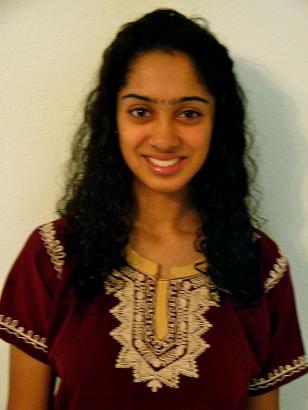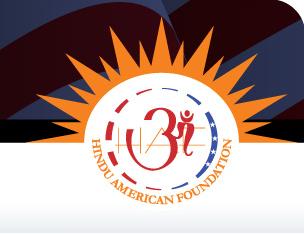Contribute
| Of Cows And Football |
Hamsika Chandrasekar
08/19/2009
Looking back in history, it is evident that religion has inspired hope and discord alike. The Crusades sanctioned a number of indescribable atrocities. The Nazis persecuted religious opponents with a violent fervor. The fragile India-Pakistan conflict calls into question spiritual identities with a voice that makes the world tremble. When such backlashes exist, how is it possible for any two cultures to unite, for a single person to maintain an identity that is not just Hindu or just American, but a delicate fusion of both? Over a million people currently living in the United States prove that this cultural merge is far from impossible. While the word ‘pear’ clearly conjures up an image of a crispy, sweet fruit and the phrase ‘President of the United States’ commands a vision of Barack Obama, the terms ‘Hindu’ and ‘American’ float somewhere in a universe of ambiguity, with vague lines to provide boundaries for their definitions. Americans are generally associated with supersized meals, football games, lucrative lifestyles, and Hollywood movies. Hindu stereotypes in turn revolve around notions of sacred cows, idol worship, and the caste system. These impressions remain shortsighted but widespread, clearly ignorant of the magnitude of Hinduism and the importance of a Hindu-American identity. Hinduism can be better described as a way of life than as a religion. It pervades dance, music, literature, fashion, and of course, prayer. Its foundations are built on faith – not just in God, but also in science and in morality. The decision made by many Hindus to refrain from partaking in meat is not simply a spiritual choice, but an ecological and medical one as well. Often, after accidentally touching a book with their foot, Hindus will bend down, touch the book with their fingers then touch both their eyes and their heart. The ritual is one of respect, for a book represents the Goddess of Knowledge, and the thought of maintaining an impure contact with such an exalted figure is unthinkable. This attitude of reverence does not apply solely to inanimate objects. Hindus often flatten themselves at the feet of elders, seeking their blessings; courteous suffixes are added to words, depending on to whom they are directed. Every dance and song twitters with a sense of humility, for each is an offering to some higher being. The sacred texts ooze with the wisdom of ages and the foresight to present solutions to problems past, present, and future. Hindus take pleasure in a number of celebrations: Diwali, Navratri, Holi, and a myriad others. While these are intrinsically bright and fun, they function most importantly as a means to emphasize the close ties between Hindus and highlight the beliefs that make Hindus a peaceful, accepting group. Hindu-Americans can be considered among the most adapted religious groups residing in America. They display no desire to impose their traditions on passersby, nor do they flaunt what they possess. Instead, a Hindu-American strives to work hard, contribute to society, and maintain an internal set of values. Think of an ant – a small creature, bearing weights many times its size, plodding on determinedly day after day, maneuvering past obstructions in a calm, steady manner. In comparison to the rest of the American population, Hindu-Americans are like ants, making up about 0.4% of the U.S. populace, existing in a tame, self-assured way. That is not to say they cannot eventually represent a larger chunk of society, for influential individuals are entirely willing to embrace Hindu-American points of view. Early in June 2009, the Sugar Land City Hall hosted a diversity conference, allowing young Hindus to speak before both council members and civilians. Each year, Cleveland welcomes thousands of classical music and dance lovers to their Thyagaraja Festival, commemorating the great Indian composer using a colorful, artistic approach. At Massachusetts Institute of Technology, Bhangra has become hugely popular; indeed, MIT admissions officer, Matt McGann, even had Bhangra at his wedding! Advocacy of Hinduism in America is a matter of networking. As the saying goes, it’s not what you know, but who you know. Something else to consider is the fact that a message grows in power when it comes from the mouth of a child. It seems almost as if the rest of the world listens to this young person and thinks to itself, “hey, if this little kid can care so much about this cause, I can too!†While a child may play the role of spokesperson, the organization and responsibility must lie with an adult. To further Hinduism, one must persevere, meet new people, speak diligently of one’s views. It must be a show and tell demonstration, where words match actions and ideas match expressions. If there are many sides to Hinduism–dance, music, etc–then there are just as many doors a person can open, step through, and share with a stranger. America would be glad of such a venture. They have embraced fragments of Hindu culture – yoga, vegetarianism (the preferred dietary style of many a celebrity!) – and have gained a favorable impression of Hinduism as a whole. Further pervasion would lend American society an outlook that harvests an acceptance of others, an appreciation for every object and being, an understanding of obscure scientific realities, an acute sense of right and wrong, and a transformed set of values. Perhaps McDonald’s would give way to rich pongal, impulsive expenditure would be replaced by careful purchases, and Hollywood movies would quail before lively festivals. It would not be a massive transformation; indeed, an increase in Hindu-American awareness would simply change little things in society – regard for others, stance on minor issues. But eventually, the small details add up, benefiting America as a whole by urging the disappearance of ignorance and the subtle presence of a rich and ancient culture. In life, circumstances do not matter nearly as much as the choices we make within them, the causes we support. A Hindu-American identity is unique, meaningful; the advancement of it is a cause well worth fighting for. Hamsika is an 18 year old female currently residing in Sugar Land, Texas. Her hobbies include Indian classical dance, Carnatic music, reading, writing, and drawing, among others. Having just graduated from Clements High School, she plans to attend MIT in the fall, with hopes of pursuing a major in Brain and Cognitive Sciences and a minor in Biomedical Engineering.Hamsika's Bio
You may also access this article through our web-site http://www.lokvani.com/

